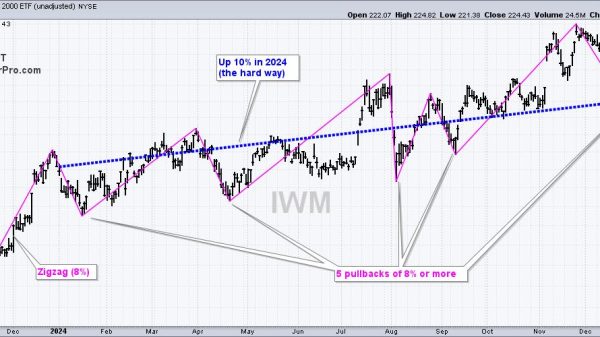Chris Edwards
Is the federal government’s debt too large?
Federal debt held by the public of $26 trillion amounts to almost $200,000 for every household in the nation.
At 98 percent and rising, federal debt as a percentage of gross domestic product (GDP) will soon hit a record high.
Debt‐to‐GDP ratios above 90 percent slow economic growth,
High and rising debt could trigger a major economic crisis.
So, yes, federal debt is far too large.
More evidence comes from comparing federal debt to state government debt. Out‐of‐control federal debt contrasts with stable and legally constrained state debt. This article looks at the rules and metrics used by the states to control debt. Federal debt is vastly higher than what state policymakers would think is prudent.
Nearly all the states have balanced budget requirements for their operating budgets, but most borrow to fund some of their capital expenditures. All states recognize that debt is costly and risky, and so they impose constitutional, statutory, and procedural restrictions on it. State finance agencies and credit rating firms routinely examine state finances to ensure that debt is held to affordable levels.
A Federal Reserve study said that debt affordability means “a state’s ability to repay all of its obligations without negatively impacting the provision of ongoing public services or raising taxes to anticompetitive levels.” The study pointed to two metrics: “debt service to revenues and debt to personal income can serve as reasonable gauges of near‐term and longer‐term burden.”
Let’s compare federal debt to state debt using these two metrics—debt to personal income and debt service to revenues.
Debt to Personal Income
Figure 1 shows measures of government debt to personal income. The higher the ratio, the more burdensome debt will be on future taxpayers. Federal debt will rise from about 116 percent of U.S. personal income in 2023 to 140 percent by 2033, based on Congressional Budget Office projections.
By contrast, total U.S. state and local government debt—as measured by the Census Bureau—was just 16 percent of U.S. personal income in 2021. But even that relatively modest figure overstates the burden of state‐local debt on taxpayers because much of it will be repaid by non‐tax revenues, such as charges for utilities, colleges, and stadiums.
A better comparison with federal debt is “tax‐supported” state debt, which is estimated by Moody’s Investors Service (linked here). Moody’s found that tax‐supported debt in the 50 states totaled just 2.8 percent of personal income in 2022. Thus, American taxpayers are on the hook for 40 times more federal debt than state debt (116 percent vs. 2.8 percent).
Federal debt can also be compared to personal‐income limits on debt that some states impose. NASBO identifies five states that have legal or advisory limits on (typically) debt as a percentage of state personal income: Georgia, Maryland, Minnesota, New York, and Rhode Island. The average limit is 3.8 percent. These states believe that issuing debt above about 3.8 percent of personal income is too risky, yet the federal government has exploded its debt to 116 percent.
Debt Service to Revenues
Figure 2 shows debt service costs relative to revenues supporting the debt. For the federal government, I simply included annual interest payments. For the states, debt servicing estimates typically include interest and principal payments because states generally repay debt when it matures.
More debt means higher costs and higher taxes down the road. States have learned from history that debt is costly and risky, which is why many states have laws or long‐standing procedures that limit debt issuance based on measures of debt servicing costs.
Federal interest payments were 16.0 percent of revenues in 2023. In June, CBO projected that interest payments would rise to 20 percent by 2033, but the recent interest rate spike suggests that the outlook is even worse now.
Compare these federal interest costs to interest costs on state debt. Interest costs were 3.8 percent of state own‐source general revenues in 2021, based on Census Bureau data. Alternately, we can look at state tax‐supported debt. Moody’s calculates that servicing costs on this debt were 2.6 percent of own‐source state revenues in 2022. State interest costs will likely rise in coming years as interest rates rise, but that will likely prompt reduced debt usage in state budget plans.
We can also examine state limits on debt service. By my count, 22 states (listed below) have legal or procedural limits on debt service as a percentage of revenues. The limits range from Montana at 1.5 percent to Hawaii at 18.5 percent. The average is 7.2 percent. Thus, federal interest costs are twice as high as the typical legal maximum debt service costs in the states.
Note that actual state debt service costs are often less than legal limits. For example, Georgia’s constitution limits debt service to 10 percent of revenues, but the state has been recently keeping the ratio to 5 percent or less.
Final Thoughts
State debt is very constrained compared to federal debt. In addition to the metrics examined here, some states impose limits based on debt as a percentage of tax revenues and debt as a percentage of statewide property values. Some states impose fixed dollar limits on general obligation debt, and nearly all the states require voter approval for issuing general obligation debt. Also, many states impose legal limits on taxes and spending.
The states sometimes cheat on their fiscal rules, but the generally modest levels of state debt sharply contrasts with the massive river of federal red ink. Debt and debt service costs are vastly greater in the federal government than state governments. Both federal and state politicians are biased toward deficit‐spending, but state experience shows that this impulse can be restrained and stabilized.
Background Notes:
My tallies of states with state debt and debt service limits are based on NASBO and Pew reports. Another useful resource is this Federal Reserve study. State debt limits are variously constitutional, statutory, or guidelines in official debt management plans.
As the Federal Reserve study discusses, definitions and coverage of debt and debt service ratios vary by state, as do the ways that the limits affect state budget processes.
The 22 states that have limits on debt service to revenues are Alaska, Delaware, Florida, Georgia, Hawaii, Maine, Maryland, Massachusetts, Montana, New Hampshire, New York, North Carolina, Ohio, Oklahoma, Oregon, Pennsylvania, Rhode Island, South Carolina, Tennessee, Texas, Virginia, and Washington. This list may not be fully up to date as I relied on NASBO (2021) and Pew (2017).
The Moody’s report on state debt is titled, “Ability to service long‐term liabilities and fixed costs improves,” September 26, 2023. You may need to email the company to get a copy.
In 2022, U.S. personal income was 85 percent of U.S. GDP.
























